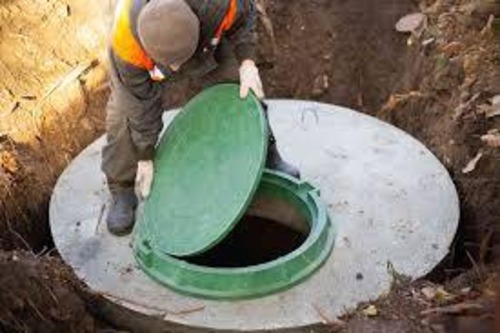The Silent Hero: Understanding Your Septic Tank
Many homeowners go about their daily lives unaware of the unsung hero hidden beneath their feet – the septic tank. This underground workhorse silently handles wastewater from your toilets, sinks, and showers, breaking it down and filtering it before releasing the treated liquid into the drainfield. But like any hardworking system, septic tanks require regular maintenance to function optimally. That’s where septic tank cleaning comes in.
When Does Your Septic Tank Need Attention?
A well-maintained septic tank can last for decades. However, neglecting it can lead to costly repairs and even environmental damage. Here are some signs that your septic tank might need cleaning:
Slow Drains: This is a classic symptom of a clogged septic tank. If drains in your home are slow to empty, it could indicate a buildup of solids in the tank.
Sewage Backups: If sewage backs up into your drains or toilets, it’s a surefire sign of a serious problem. This can happen due to a full or clogged septic tank.
Strong Odors: A foul odor around your drainfield can indicate a problem with the septic system. This could be due to improper ventilation or a clogged tank.
Soggy Drainfield: The drainfield is the area where treated wastewater is released from the septic tank. If the drainfield becomes soggy or spongy, it might be overloaded and unable to properly absorb the liquid.
Gurgling Sounds: Gurgling noises coming from your drains can indicate that there’s a blockage preventing the wastewater from flowing freely.
The Cleaning Cavalry Arrives: What to Expect During Septic Tank Pumping
If you experience any of the warning signs above, it’s time to call a professional septic tank cleaning service. Here’s a breakdown of what to expect during the cleaning process:
Locating the Tank: The technician will use a special tool to locate the septic tank on your property.
Inspection: The technician will visually inspect the tank and surrounding area for any signs of damage or leaks.
Pumping the Tank: Using a vacuum truck, the technician will remove the accumulated liquid and sludge from the tank.
Level Check: After pumping, the technician will check the level of liquids remaining in the tank to ensure proper functioning.
Solid Waste Disposal: The removed waste will be transported to a designated wastewater treatment facility for proper disposal.
Cleaning and Maintenance: In some cases, the technician might recommend additional cleaning of the tank or maintenance of the surrounding system.
The Benefits of Regular Septic Tank Cleaning
Regular septic tank cleaning offers several benefits for your home and the environment:
Prevents Clogs and Backups: By removing accumulated solids before they cause blockages, you can avoid the inconvenience and expense of clogged drains and sewage backups.
Extends Septic System Lifespan: Regular cleaning helps keep the entire septic system functioning efficiently, extending its lifespan and saving you money on costly repairs or replacements down the line.
Protects Your Property: A neglected septic system can lead to leaks and overflows, causing damage to your foundation and surrounding landscape.
Safeguards Your Health: Proper septic system function prevents the contamination of your well water and surrounding soil with harmful bacteria.
Environmental Protection: A healthy septic system ensures proper wastewater treatment, minimizing the risk of polluting groundwater and nearby waterways.
Maintaining Your Septic System for Optimal Performance
Here are some additional tips to keep your emergency septic pumping system healthy between cleanings:
Be Mindful of What Goes Down the Drain: Avoid flushing or pouring anything that can clog the system, such as grease, coffee grounds, eggshells, or harsh chemicals.
Use a Garbage Disposal Sparingly: Garbage disposals can contribute to the buildup of solids in the tank. Use it sparingly and avoid putting tough-to-grind materials down it.
Spread the Load: Distribute laundry and showers throughout the week to avoid overloading the tank at any given time.
Plant Wisely: Avoid planting trees with aggressive root systems near the drainfield as they can damage the pipes.
Schedule Regular Cleanings: The recommended cleaning frequency depends on factors like household size and wastewater

